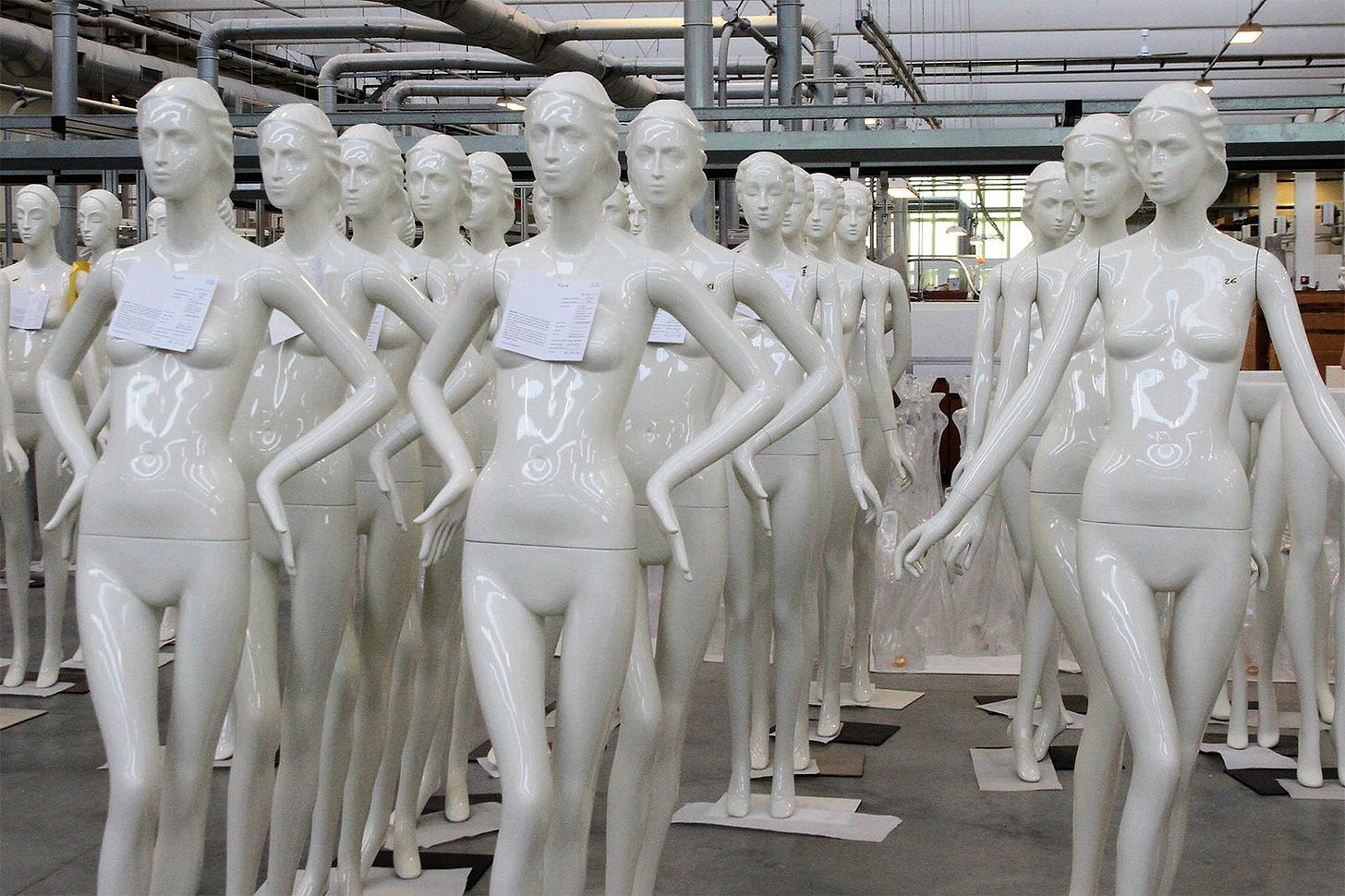How does white supremacy show up in our clothes?
and how it relates to the ladder of body hierarchy.
I’ve had this one rolling around in my mind for a while now, but have been afraid to put it out there because of all the ways I could mess it up. I’m doing it anyway and am happy to be called in wherever I need to be.
I’m not proud of it, but over the last couple of years, I felt panicked several times as my body continued to change. If I dig down into the root of the panic, it’s because I’m afraid of losing my place on the ladder of body hierarchy. Intellectually I know and accept that women in less idealized bodies are no less valuable, but my body still feels fear at the thought of losing my place on the ladder.
What is the ladder of body hierarchy?
It’s a term coined by body liberation leader Sonya Renee Taylor. There’s a pretty succinct definition in this article:
“…radical self-love isn't about getting to the place where you can finally like your thighs; it's the process of realizing that most of us subscribe to what Taylor calls a ‘hierarchy of bodies.’ We gauge our own self-worth and value based on how we fit into that pecking order, and in turn, we tend to exalt (or resent) those above us and shame (or torment) those below us.”
So, imagine a ladder with the “ideal” body at the top: tall, thin, white, straight haired, blonde, blue-eyed, youthful, and able-bodied (note: I was called in by a reader to add cisgender and heterosexual to this list of characteristics of the ideal body). If you have darker skin, curlier hair, a larger body, a disability, you move lower on the ladder of body hierarchy. And the further away you get, the more marginalized you are, the fewer advantages you have, the less privilege you have.
It makes sense that we would try and advance up the ladder. We’re human and we want to be accepted. It's been ingrained in us that that's what we should do. For some of us, it is required for our literal safety, as others could harm us for not making an effort at performing acceptable appearances.
Unfortunately, when you (even unconsciously) subscribe to the idea of the ladder, your sense of feeling good in your body is built upon others feelings bad in theirs. It’s based on ranking yourself and deriving value from your place on the ladder (this is what I’m ashamed to admit I did, and am still working on). It means that in order to have status, other bodies have to be perceived as not as good. And this is where the ladder aligns with white supremacy, which is also based on ranking humans’ value by how well they perform whiteness.
We have used clothing for a long time to try and move ourselves up the ladder. We wear clothing that gives the illusion that our body fits the ideal proportions. We use clothing to try to create the illusion that our body is smaller than it is. We wear makeup or straighten our hair. Again, a huge disclaimer here that some people are punished for not doing those things, and so their participation is a means of survival (a few years ago, my friend Jennedy shared on my old blog about how white supremacy affects every decision about her appearance).
For those of us with the privilege to choose, how can we use clothing to unsubscribe from the ladder? We can work on letting go of ranking ourselves based on ideal body proportion, ideal body shape, and ideal body size. We can stop seeing ourselves as somehow better than others based on what rung of the ladder we’re on. We can start looking at our clothes as something that is an expression of our true selves, our authentic personality, and something that we can use to care for ourselves, to give our bodies relief from the pressure to keep climbing. Those of us with (thin or white or pretty or age) privilege can push the boundaries of what’s considered acceptable so that we might begin to change the standards for all bodies.
The hierarchy exists, it’s up to those of us higher up the ladder to dismantle it.




Ooof. I straightened my hair for so many years after a friend told me my faced looked thinner when my hair was straight versus when I wore my naturally curly hair. I went back to wearing my hair curly maybe 10 years ago and am so glad I did. But that little comment still sticks with me when I look in the mirror.
Thank you for sharing this post!
I love this reflection. I am sewing a wardrobe for myself and dismantling the idea of "flattering" has been a core part of that so that I can choose the patterns that I enjoy, versus those that someone with my proportions "should" wear. I remember priding myself in choosing a flowy woven top I loved rather than the stretchy knit tops I'd worn for years while trying to appear smaller. But when I asked an advanced sewer why I had drag lines at my shoulders, she let me know I had chosen a size or even two sizes too small for my large bust. And I know, subconsciously, I did it out of a lingering fear that a flowy top would make me appear larger than I am. I was afraid to give up privilege by appearing more top-heavy than the body hierarchy's ideal. This stuff's going to take so so long to unpack and let go. But I'm glad to have started.